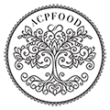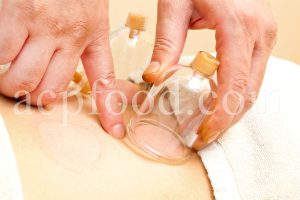Introduction
Generally, cupping therapy has been used in most cultures and it can be said for sure that hijama and cupping therapy have thousands of years history in the Middle East.
In ancient Egypt reference medical books written on papyrus in 1550 BC, cupping therapy is mentioned. Cupping is known as dry hijama and is one of the important treatment methods in traditional medicine and acupuncture (Chinese) which has a history of several thousand years. From the distant past, the doctors and sages of the East have realized the therapeutic properties of cupping and have used it in the treatment of many diseases and pains.
In traditional Chinese medicine, cupping therapy and acupuncture are combined with each other, and in many cases, Chinese doctors use it together to increase the effectiveness of acupuncture.
In Persian traditional medicine, cupping therapy has a long history and has been prescribed by great doctors such as Avicenna, Abu Bakr al-Razi, Jorjani, etc. to treat various diseases and pains.
The Difference Between Wet Hijama (Wet Cupping) And Dry Hijama (Dry Cupping)
In dry hijama (known as dry cupping), the glasses are held on the skin for 15 seconds to 20 minutes, then will be removed and the process is done. But in wet hijama (wet cupping), after 3 minutes, the glass is removed from the skin and some small scratches are made on the skin and through a scalpel blade.
Types Of Cupping Therapy
In terms of making a vacuum in the cup, cupping is done in two ways:
The Difference Between Warm And Cold Cupping
Cupping therapy generally warms up the body (due to gathering blood in that area). On the other hand, in the cold cupping, artificial heat is not given to the body, but in the warm one, some artificial heat is given to the cup by fire, which makes that part of the body warmer.
Therefore, naming the cupping with “cold” prefix doesn’t mean it cools the body. Of course, it is worth mentioning that cupping on some areas of the body cause the whole body to get cold, since it gathers the blood in an area far from the central vascular system. And it’s because the mechanism of the cupping, not the type of it (cold cupping).
Warm cupping is more useful for people with a cold temperament or for regional local heating (such as people who have a cold temperament or who have muscle spasms due to sleeping and sitting on a cold place) and frostbite.
It is used for fat burning on a specific part of the body, because the heat evaporates the local moisture and dilutes the fats and ready for removal.
In general, if there is no access to a flame and warm cupping or if there is no skill (burns and possible dangers to the skin), you can use the cold one and use its benefits.
Cupping Therapy Can Be Done In 3 Ways
Fixed cupping: in this method, the glass is kept on the body for 15 seconds to 20 minutes, then it is separated; this type of cupping causes the material to stagnate in that area and humors freezes in it.
This type of cupping is used in broad shoulder, waist, back pain treatment cupping and chronic fatigue relief.
Intermittent cupping: If we repeatedly remove the glass or glasses of the cupping after placing it on the body part and put it again, we call it intermittent cupping, which causes fine blood gathering and light material circulates in that area (pulls light and fine humors to that area) and warms the position more than other types of cupping.
In this method, the cupping can be done forty times or more, which should last less than 3 to 5 seconds.
Moving or slippery cupping: In this method, before putting the cups on the body, the area is embrocated, and then the cup is gently suctioned and moved on the skin of the area slowly with the movement of the hand.
This type is very effective in relieving muscle spasms and excessive fatigue, as well as moving materials inside the body.
The direction of the cup should be towards where we want the materials to be transferred to. Direction is very important in this type of cupping.
How To Do Cupping?
First of all, skin should be embrocated with natural oil such as sweet almond, chamomile, sesame, olive, etc. before cupping. Oils with hot temperament are more effective. Especially if the oil is warmed up a little before use (you can put oil on the radiator for a short time).
You should never try to remove the glass from the skin by force and by pulling, because it can even separate the skin from the underlying tissue.
In warm cupping therapy, a small piece of alcohol cotton ignited is entered to the bottom of the cup (which is facing upwards) through metal tweezers, while the edge of the cup is close to the skin. The fire shouldn’t contact the edges of the cup and make it hot. Then quickly take out the fire and place the cup on the skin to achieve sufficient suction.
The important point in doing cupping is to observe safety principles. If it is done with overheated cup or excessive suction, it can lead to blisters or burns.
In doing cupping, embrocating before it, the amount of suction pressure, and the length of time the cups stay on the body are important and it is different in different people and geographical places.
Cupping Therapy Benefits
Cupping relieves pain and treats various diseases by multiple mechanisms, some of which are mentioned below:
3- By creating a vacuum, the ventilator helps in the discharge of toxins and local infections, for example, in snake and scorpion bites.
4- It causes muscle expansion by creating negative pressure and helps in relieving muscle spasm, which is the source of many local pains.
5- By stimulating the intestines and the digestive system, it improves some digestive diseases, such as stomach ulcers, lazy bowel syndrome, and constipation.
6- Intermittent cupping therapy is effective in removing emaciation and increasing local muscle tissue by absorbing blood to the muscles.
7- When fat is stored in a particular part of the body, cupping therapy is effective in burning those fat with the mechanism of pulling blood to that area.
8- The negative pressure made by the cupping can be used to control and regulate some bleeding in the body. For example, in hypermenorrhea (menstruation with heavy bleeding), you can do cupping under the breasts. With this operation, the blood pressure is directed from the lower limb to the upper limb and the intensity of bleeding is reduced. Or in hypomenorrhea (menstruation with low bleeding), by cupping the thighs and legs, the blood pressure can be increased from the upper parts to the lower limbs, so it increases the amount of bleeding. In severe nosebleeds, by cupping around the navel (on the bleeding side), the blood pressure is transferred to the lower parts and the nosebleed stops.
9- Most of muscle pains are caused by the involvement of sensory nerves between muscles or hardened connective tissue. Therefore, by cupping therapy, in many cases, this pressure is removed from the nerve and the pain is relieved.
10- In relieving paresthesia, cupping is effective by accelerating blood supply and tissue oxygen supply.
11- Some doctors and sages use the negative pressure of the cupping to help remove kidney stones. In this way, after embrocating, they do the slippery cupping from the kidney side to the bladder side.
12- In people who have cold and moist or phlegmatic temperament, warm cupping is widely used and is a suitable alternative to wet hijama.
13- According to the definition of Persian traditional medicine, sometimes pains are caused by coldness over tissue or organ, and experience has shown that many pains are relieved by warming that part of the body. A warm cupping therapy is effective in relieving these pains.
14- Due to the increasing the blood supply of the skin by cupping therapy, it is effective in treating many skin diseases.
15- In knees that have swelling, pain and accumulation of liquid in the joint (local accumulation of phlegm), with 40 to 120 sessions of intermittent cupping therapy every other day, this liquid can be gradually removed from the organ.
24- strengthening muscles
25- Treatment of thyroid disease (hyperthyroidism and hypothyroidism)
26- Infertility treatment
27- Improving kidney function
28- Prevention of diabetes
29- Maintaining the overall health of the body
30- Treatment of knee arthritis
31- Treatment of abnormal curvature of the spine
32- Treatment of depression
33- Reduction of headache
34- Treatment of kidney stones and kidney pains
35- Treatment of sexual weakness
36- Treatment of weakness and numbness in the legs
37- Increasing the speed of metabolism
Reminder: For removing local and systemic phlegm, warm and dry cupping is better than cold one. Cupping therapy is generally used as a complementary treatment in the treatment of diseases. Therefore, since pain and disease have various causes, accurate diagnosis is very important. For example, headache is a disease with various causes, such as blood pressure, cerebrovascular disorders, acute sinusitis, brain tumor, toothache, migraine, anxiety, depression, etc., so it is necessary to do cupping after an accurate diagnosis by a doctor.
What Are The Side Effects Of Cupping?
These treatment methods usually have few side effects and if you do this this through a professional and trained therapist or doctor, you will probably not experience any side effects. Some complications such as mild pain, bruises, burns or skin infection may be observed after the procedure, which will disappear after a few days. You just have to keep this in mind that under no circumstances should you use the cupping in areas with skin inflammation, burns, infections, or open wounds.






